#12 April 1917
Text

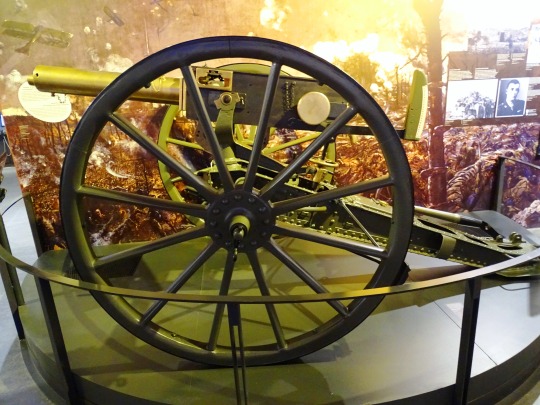










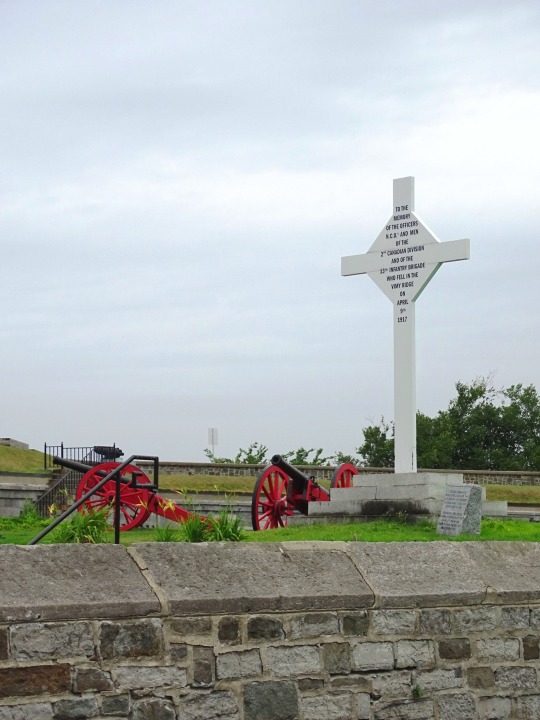
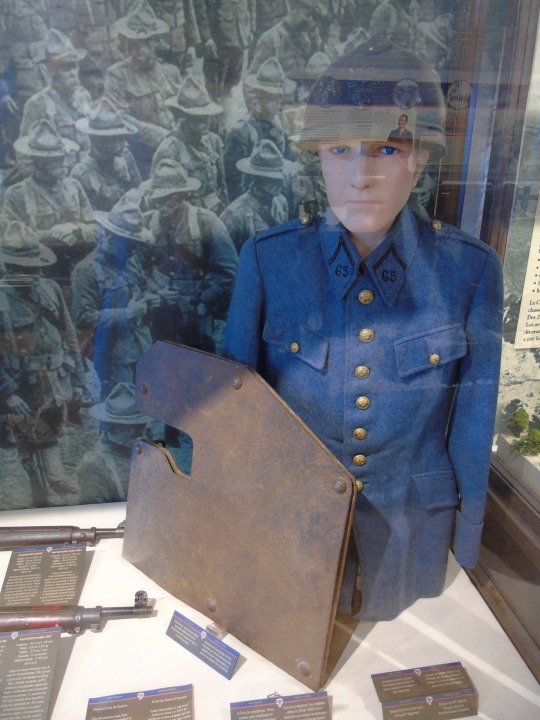
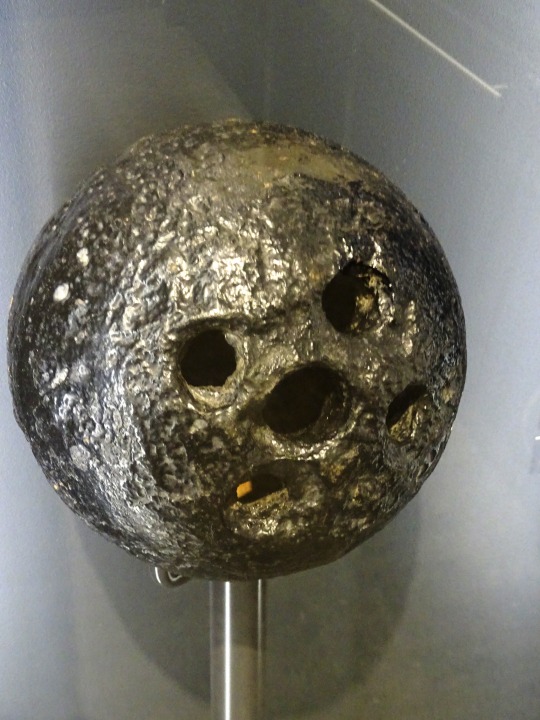

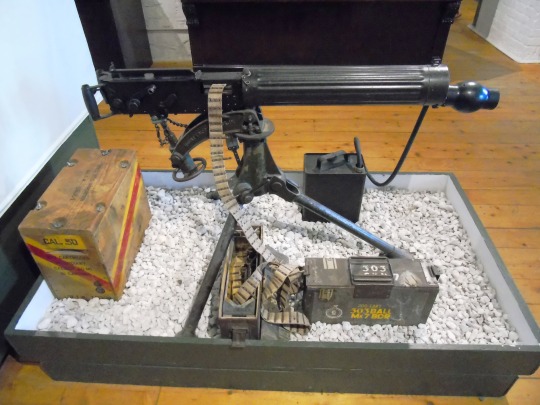


World War I: Canadian forces successfully completed the taking of Vimy Ridge from the Germans on April 12, 1917.
#World War I#Canadian forces#taking of Vimy Ridge#12 April 1917#history#anniversary#WWI#army#Citadelle of Quebec#shrapnel#Québec#Quebec City#Royal 22e Régiment Museum#landmark#tourist attraction#interior#original photography#military history#The Road to Vimy and Beyond#Halifax Citadel#Fort George#Nova Scotia#summer 2018#2015#Canada#travel#vacation#Army Museum Halifax Citadel#cityscape#World War One
5 notes
·
View notes
Text

This is a rare graver marker made by soldiers for a fallen leader. After the war, the Commonwealth War Graves Commission discarded unofficial grave markers as it established larger cemeteries with regulation headstones. Lieutenant Norman Howard Pawley was killed in action on 12 April 1917 while leading his soldiers in the attack on Vimy Ridge.
#vimy ridge#vimy#world war one#the great war#history#historical photos#the first world war#ww1#world war 1#1917#canadian history#wwi
62 notes
·
View notes
Text

München, February 22, 1943 / 2024
«Einer muss doch schließlich mal damit anfangen. Was wir sagten und schrieben, denken ja so viele. Nur wagen sie es nicht, es auszusprechen.» – Sophie Scholl, Justizpalastes, München, February 22, 1943
«Die Verurteilte war ruhig und gefasst.»
(Protokoll über die Vollstreckung des Todesurteils des Volksgerichtshofes an Sophie Scholl, München, den 22. Februar 1943)
«freiheit»
(the reverse side (detail) of a document belonging to the Chief Prosecutors, February 21, 1943, with handwriting «freedom» by Sophie Scholl)
Sophie Scholl (May 9, 1921 – February 22, 1943), student
Hans Scholl (September 22, 1918 – February 22, 1943), student
Christoph Probst (November 6, 1919 – February 22, 1943), student
Alexander Schmorell (September 16, 1917 – July 13, 1943), student
Kurt Huber (October 24, 1893 – July 13, 1943), professor
Willi Graf (January 2, 1918 – October 12, 1943), student
and
Hans Konrad Leipelt (July 18, 1921 – January 29, 1945), student
Margaretha Rothe (June 13, 1919 – April 15, 1945), student
Reinhold Meyer (July 18, 1920 – November 12, 1944), student
Friedrich Geussenhainer (April 24, 1912 – April 1945), student
Katharina Leipelt (May 28, 1893 – January 9, 1944), dr. rer. nat.
Elisabeth Lange (July 7, 1900 – January 28, 1944)
Margaretha Mrosek (December 25, 1902 – April 24, 1945)
Kurt Ledien (June 5, 1893 – April 23, 1945), dr. jur.
«Das wird Wellen schlagen»
«Allen!»
(image: Sophie Scholl, ca. early-1940s, in Christine Hikel, Sophies Schwester. Inge Scholl und die Weiße Rose, Oldenbourg Verlag, München, 2013, p. 94)
#weiße rose#sophie scholl#hans scholl#christoph probst#alexander schmorell#kurt huber#willi graf#hans konrad leipelt#margaretha rothe#reinhold meyer#friedrich geussenhainer#katharina leipelt#katharina leipelt baron#elisabeth lange#margaretha mrosek#margaretha mrosek schram#kurt ledien#christine hikel#inge scholl#weiße rose stiftung#oldenbourg verlag#studentenwohnheim geschwister scholl#1890s#1900s#1910s#1920s#1940s
21 notes
·
View notes
Photo

On this day, 15 April 1916, the newspaper of the revolutionary Industrial Workers of the World union announced the formation of its Domestic Workers Union in Denver, Colorado. Much of the history of the group was lost, but a fascinating letter by Jane Street, its secretary, was illegally seized by the Justice Department in 1917 and only discovered nearly 60 years later. She was writing to another domestic worker organiser in Tulsa, Oklahoma in which she described how they organised and took action to improve pay and conditions: "if you want to raise a job from $20 to $30. . . you can have a dozen girls answer an ad and demand $30—even if they do not want work at all. Or call up the woman and tell her you will accept the position at $20. Then she will not run her ad the next day. Don’t go. Call up the next day and ask for $25 and promise to go (and don’t go). On the third day she will say, 'Come on out and we will talk the matter over.' You can get not only the wages, but shortened hours and lightened labor as well." More information in our podcast episode 16 about women in the early IWW: https://workingclasshistory.com/2018/12/02/e16-women-in-the-early-iww/ Pictured: women IWW members, 1913 https://www.facebook.com/photo.php?fbid=609480367891849&set=a.602588028581083&type=3
133 notes
·
View notes
Text
Rudolf Hess

This is Rudolf Hess, Hitler's ''dolphin'' timeline:
1894: He was born in Alexandria, Egypt.
1908: He returned to Germany with his family.
1914: WWI started.
1914: He enlisted in the 7th Bavarian Field Artillery Regiment, becoming an infantryman.
1914: On 9 November he was transferred to the 1st Infantry Regiment, stationed near Arras. He was awarded the Iron Cross 2nd class and promoted to Gefreiter (corporal)
1915: He was promoted to Vizefeldwebel (senior non-commissioned officer) and received the Bavarian Military Merit Cross.
1916: He was hit by shrapnel in the left hand and arm on 12 June 1916 in fighting near the village of Thiaumont. After a month off to recover, he was sent back to the Verdun area, where he remained until December.
1917: He was wounded on 23 July and again on 8 August.
1917: In October he received promotion to Leutnant der Reserve.
1917: He had been assigned to Jagdstaffel 35b, a Bavarian fighter squadron equipped with Fokker D.VII biplanes.
1918: He was discharged from the armed forces in December 1918.
1918: He joined the Thule Society.
1918: He joined a Freikorps group.
1919: He enrolled in the University of Munich, where he studied history and economics. His geopolitics professor was Karl Haushofer.
1920: He met his future wife, Ilse.
1920: He joined the Nazi Party.
1921: On 4 November he was injured while protecting Hitler when a bomb planted by a Marxist group exploded.
1922: He joined the SA.
1923: He took part in the failed Munich Putsch.
1923: He was arrested and sentenced to 18 months.
1923: He helped Hitler write Mein Kampf.
1924: He was released.
1925: Hitler named Hess his private secretary in April.
1928: He married Ilse Prohl.
1929: Hitler appointed him personal adjutant on 20 July.
1930: Hess became the owner of a BFW M.23b monoplane sponsored by the party newspaper.
1932: Hess was named party Political Central Commissioner.
1933: Adolf Hitler became Reich Chancellor.
1933: He was named Deputy Führer of the NSDAP on 21 April and was appointed to the cabinet, with the post of Reich Minister without Portfolio, on 1 December.
1934: Hess was given the rank of Obergruppenführer in the SS, the second-highest SS rank.
1935: Hess' office was partly responsible for drafting Hitler's Nuremberg Laws.
1938: His only child, Wolf, was born.
1939: The Second World War began.
1939: Hitler made Hess second in line to succeed him, after Hermann Göring.
1941: He flew to Scotland.
1945: The Second World War ended.
1946: At the Nuremberg Trials Hess, charged on four counts, was found guilty.
1946: He was sented to life in prison.
1987: He died.
Sources:
Wikipedia: Rudolf Hess
Military Wiki: Rudolf Hess
if you don't like it go with your life
❗❗I DON'T SUPPORT NAZISM, FASCISM OR ZIONISM IN ANY WAY, THIS IS AN EDUCATIONAL POST❗❗
36 notes
·
View notes
Photo
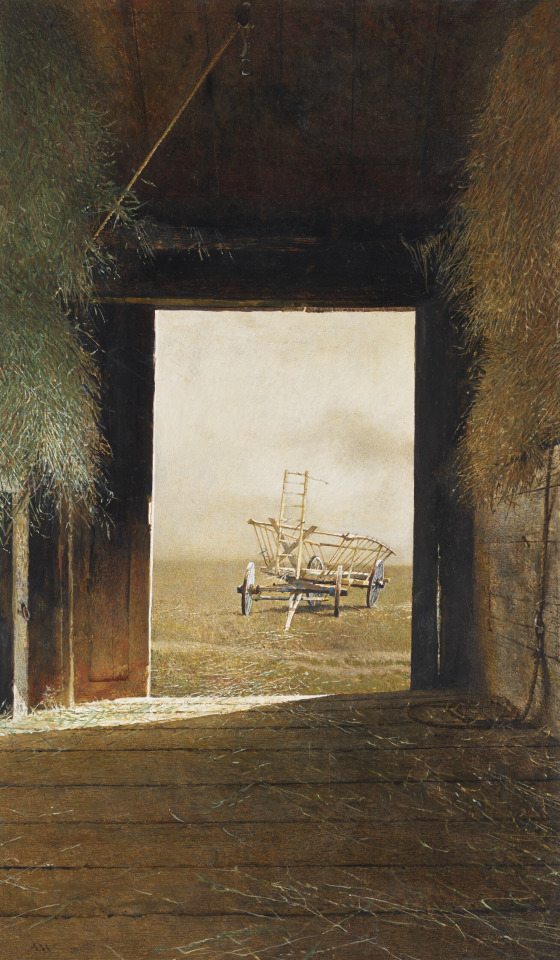
Andrew Wyeth (1917-2009) - Hay day
Tempera on panel. Painted in 1980.
20.75 x 12 inches, 52.7 x 30.5 cm. Estimate: US$400,000-600,000.
Sold Christie’s, New York, 21 April 2023 for US$693,000 incl B.P.
108 notes
·
View notes
Text
Oc Intro Page
Bianca Maria “B” Hernandez: Born June 30th, 1918, Havana, Cuba, 5’6, she’s insane and willing to fight anyone with no issue, she and her mother immigrated to Washington Heights, New York, in 1923 when she was 5, joined the airborne as a sense of duty and a way to get away from her mother and out of spite towards her mother, rank is Staff Sergeant
Zipporah Josephine “Zippo” Fieldman: Born November 23rd, 1914, Saratov, Russia, 5’7, she will brawl anyone and then go to Shabbos right after, she and her family immigrated to San Francisco, California, in 1916 when she was 2, joined the airborne because she’s always been the oldest sibling and is the only sibling that could go to war, she felt like she had to go as a sense of duty towards her family, rank is Technician 5th Grade (sniper)
Olive-Marie “Ollie” LeBeau: Born April 16th, 1921, New Orleans, Louisiana, 5’4, is usually very calm and collective, can act a little chaotic at times but most of the time is very chill, unless you get her around B and Zippo then she’ll join them in their bs, she will fight a person if need be or drunk enough, technically engaged but she hates her fiance with a passion and was forced to become engaged to him just so her family would let her go into the military, joined the airborne because she wanted to help people and do something with her life, rank is Technician 3rd Grade (nurse/medic)
Marselle Anita Rosaliano: Born April 16th, 1922, Alpine, New Jersey, 5’6, very bubbly and energetic, like a puppy, oblivious to certain things like flirting, and takes a minute to understand dirty jokes, will fight only if necessary or drunk, will be very blunt and tell you off if you really piss her off, she has connections to the mob since her dad runs one, but we don’t talk about that, joined the airborne because she wanted to help people, rank is Private First Class (nurse/medic)
Elizabeth Annabelle “Eliza” Thomlin: Born October 30th, 1923, Asheville, North Carolina, absolutely batshit insane, would probably kill a man with no issues, has severe mommy and daddy issues, hates religion with a burning passion, isn’t afraid of anyone, including Speirs, joined the airborne because she just needed to get away from her normal life and just do something with it, she saw that escape in the airborne, she’s willing to take the risk of death, rank is Corporal (nurse/medic)
Torrance Georgia “Torrie” Stylinski: Born March 27th, 1921, London, England, is a comedian on George’s level, will fight if drunk for shits and giggles, lived in England till she was 10, then moved to Ireland with her mother after her parents divorced, lived there till she was 15 and then basically her whole family on her moms side moved to America after her grandpa died, she’s a mixed albino woman, who currently lives in Hattiesburg, Mississippi, joined the airborne because she wanted to fight, and to get away from her mother, rank is 2nd Lieutenant
Mary Elise McCullen: Born November 15th, 1921, Castle Rock, Washington, has so many issues, like girl is so depressed but she’s vibing and laughing her ass off with Malarkey, Skip and Penk, will fight someone sober for funsies, her dad passed in a motorcycle accident when she was 12, so when she heard about Don and More’s run in with the truck she was PISSED, doesn’t have a great relationship with her mom, but she deals with it, joined the airborne because she wanted to, she saw her chance and took it, rank is Sergeant (mortar squad)
Allison Katherine “Allie” Harten: Born February 12th, 1917, Mountain View, Arkansas, is basically the mother of this group of idiots, is completely and absolutely done with everyone’s bs, both men and women, will call someone out and berate them in front of anyone without care, she doesn’t fight unless absolutely necessary, and doesn’t as drunk as everyone else, somebody's gotta be responsible here, joined the military when she was 18 in 1935, and once they introduced the airborne she joined that immediately, same reason as Lip she wanted to be the best so you gotta be with the best, she joined the military because her father and grandfather were both army men, and she has no brothers, so she decided to do join, it was also to piss her mom off, rank is 1st Lieutenant (intelligence officer)
Julia Ariana Josefina Vasquez-Rodriguez: Born, July 22nd, 1923, The Bronx, New York, the mini B, is treated like everyone’s younger sister, simply because she knew Joe Toye before the war, will fight someone if pissed off, not very hard to do, or drunk, will fight dirty (@blueberry-ovaries, i think you’re gonna love her), the youngest of her full-blooded siblings, moved to Philadelphia when she was 17 because she wanted to and for work, became friends with Joe Toye caused they lived in the same apartment building (yes this is setting up for a fic in the future, hush), joined the airborne because she wanted to, she was in training with the other replacements such as, Heffron, Hashey and Garcia, so she came in right before Market Garden, rank is Private First Class
(Also these girls got some ships to go with them, so i wanna see if y'all, my BoB moots, can guess which guys they go with, a few of them are kinda obvious but still wanna see what y'all think)
16 notes
·
View notes
Text
Ein Heldenleben (A Hero's Life) is an expanded version of Manfred von Richthofen's memoir Der Rote Kampfflieger (The Red Baron). In addition to the autobiography, it includes letters from Manfred to his family (like the 1933 edition) and some chapters that were not included in the book, as well as other comments and anecdotes from people who were close to him. It also includes accounts by his brother Lothar von Richthofen.
Overview:
Visit to the Great Headquarters
My Engagement
A flight in an observation balloon
A day at Staffel 11 (by Lothar von Richthofen)
At Jagdgeschwader Richthofen (by a Dutch reporter)
Richthofen as leader and comrade (by Leutnant Friedrich Wilhelm Lübbert, Jasta 11)
In memory of Richthofen (by v. B.)
An encounter (by Emil August Glogau)
The mother about the boy Manfred
Letter by Leutnant Hans Joachim Wolff to Leutnant Lothar Freiherr von Richthofen
How Richthofen shot down his seventy fifth victory (by Leutnant Lampel)
Richthofen (by Erich von Salzmann):
Part 1
Part 2
Part 3
At court for the second time
Letters of Erwin Böhme: Before the war, Erwin Böhme worked as an engineer in East Africa. When the war started he was already 37 years old. This did not stop him and he became a successful fighter pilot, being personally selected by Boelcke to join his fighter squadron. In 1916 he met the daughter of a former business colleague and they fell in love. The following letters are those Böhme wrote to his later fiancée Annamarie during the war days.
[Translated are the parts of the letters where Böhme describes his life as a fighter pilot.]
Landres, 24 June 1916
Kowel, 7 July 1916
Kowel, 3 August 1916
Kowel, 15 August 1916
Bertincourt, 11 September 1916
Bertincourt, 21 September 1916
Somme, 4 October 1916
Somme, 18 October 1916
Lagnicourt, 31 October 1916
Lagnicourt, 12 November 1916
Jagdstaffel Boelcke, 12 December 1916
Partenkirchen, 28 January 1917
Jagdstaffel Boelcke, 8 April 1917
Valenciennes, 25 April 1917
Valenciennes, 9 May 1917
Valenciennes, 3 July 1917
Jagdstaffel 29, 16 July 1917
Jagdstaffel 29, 7 August 1917
Jagdstaffel 29, 17 August 1917
18 August 1917
Jagdstaffel Boelcke, 21 September 1917
“With the aces”, 20 October 1917
Rumbeke, 31 October 1917
Back with the aces again, 31 October 1917
4 November 1917, Sunday morning
Jagdstaffel Boelcke, 14 November 1917
Bavikhove, 16 November 1917
Bavikhove, 19 November 1917
27 November 1917
The End
Rudolf Berthold – a man who never let himself be dissuaded from his convictions. A man who, despite the worst injuries always returned to the front as quickly as possible. A man for whom the war was not over, even if it was over for his country. A summary of Bertholds life can be found in the pinned post over @subtile-jagden
The following are translated diary entries as well as some of his letters.
Before mobilization
It is getting serious!
First challenges
Emergency landing
Important reconnaissance flights during the advance
The most beautiful day of my life!
Finally a pilot!
Buddecke, the dear comrade!
Feldfliegerabteilung 23
End of 1915
Single seater fighter unit Vaux and the first victories
An unfortunate day for Berthold
Back to the unit
Jasta 4, the Pour le mérite and a new challenge
Beginning of 1917
Finally off to Flanders
End of 1918: Ceasefire and revolution
1919 / 1920: Uncertainties, Soldier´s Councils and the Last Fight
Ernst Jünger was a passionate diarist. During his time in the First World War, he filled 14 diaries. Based on these entries, he wrote his popular book Storms of Steel. The diary entries provide additional information, funny stories and reveal his true feelings during this turbulent time.
First experiences
Officer Candidate and Relocation
First Cannonade
First wound
Back at the front
Days at the front and stories from old friends
Quéant
Friendly contact with the enemy
New year, same situtation
A love affair
Officer training course
Back in the trenches and dangerous patrols
Mine warfare and gas attacks
An English prisoner and a funeral
Summer 1916
Battle of the Somme Part 1
A short break from fighting and another injuriy
Wartime conditions
Another injury
30 notes
·
View notes
Text
Kismet Characters & Family Trees Part Nine:



Draco Malfoy (5 June 1980) SLYTHERIN m. Astoria Malfoy (7 December 1981) SLYTHERIN (2004) m. Circe Castellanos (4 August 1990) RAVENCLAW (2040):
1. Scorpius Hyperion Malfoy (6 January 2006) SLYTHERIN m. Albus Potter (1 June 2006) SLYTHERIN (2031):
a) Lyra Astoria Malfoy (1 June 2037) RAVENCLAW
b) Celeste Ginevra Malfoy (5 March 2039) RAVENCLAW
c) Archer Kai Malfoy (6 July 2044) SLYTHERIN
Alexandros Castellanos (1915) m. Diana Ioannou (1917) (1945):
1. Acheron Castellanos (1949) m. Athena Katsaros (1953) (1974):
a) Adara Athena Castellanos (1975)
b) Alida Althea Castellanos (1978)
c) Alexandros Acheron Castellanos (1983)
d) Archer Alexander Castellanos (1985)
2. Aristokles Castellanos (1952) m. Vanessa Addams (1956) (1976):
a) Eros Alexandros Castellanos (1978)
b) Desdemona Eustice Castellanos (1978)
c) Adam Aristotle Castellanos (1982)
d) Thaddeus Aristokles Castellanos (1985)
e) Zora Vanessa Castellanos (March 1986)
3. Adonis Castellanos (1955) m. Atlas Creed (1961) (1993):
4. Apollo Castellanos (17 February, 1959) m. Medea Gataki (1960) (1983):
a) Daphne Grace Castellanos (7 November, 1989)
b) Circe Althea Castellanos (4 August 1990) m. Draco Malfoy (5 June 1980) (2040):
i) Scorpius Hyperion Malfoy (6 January 2006) SLYTHERIN m. Albus Potter (1 June 2006) SLYTHERIN (2031):
aa) Lyra Astoria Malfoy (1 June 2037) RAVENCLAW
bb) Celeste Ginevra Malfoy (5 March 2039) RAVENCLAW
cc) Archer Kai Malfoy (6 July 2044) SLYTHERIN
5. Althea Castellanos (15 September, 1962) m. Alexander Papakonstaninou (1947) (1989):
a) Nilo Alexander Papakonstantinou (7 February, 1991)
b) Niko Alexander Papakonstantinou (7 February, 1991)
c) Nicholas Phoenix Papakonstantinou (12 April, 1992)
d) Basil Kai Papakonstantinou (17 August, 1994)
e) Bryony Iliana Papakonstantinou (17 August, 1994)
f) Calla Gallina Papakonstantinou (1 September, 1995)
Thanks to @ellieoryan7447 for taking the time and effort to create these!
#harry potter fanfiction#breanie#the world of asc#the kismet trilogy#the kismet trilogy by breanie#characters and family trees
12 notes
·
View notes
Text
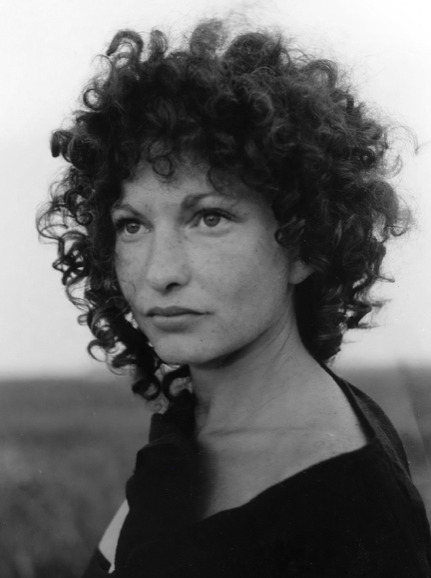
Deren died in 1961, at the age of 44, from a brain hemorrhage brought on by extreme malnutrition.
Her condition may have also been weakened by her long-term dependence on amphetamines and sleeping pills prescribed by Max Jacobson, a doctor and member of the arts scene, notorious for his liberal prescription of drugs, who later became famous as one of President John F. Kennedy's physicians.
Her ashes were scattered in Japan at Mount Fuji.
Maya Deren (born Eleonora Derenkovskaya, Ukrainian: Елеоно́ра Деренко́вська; May 12 [O.S. April 29] 1917 – October 13, 1961) was a Ukrainian-born (then part of the Russian Empire, now independent Ukraine) American experimental filmmaker and important part of the avant-garde in the 1940s and 1950s. Deren was also a choreographer, dancer, film theorist, poet, lecturer, writer, and photographer. via Wikipedia
18 notes
·
View notes
Text


Chrese Evans, a 54-year old Buddhist antique shop owner from Portland, Oregon who is also Joseph Stalin's granddaughter. Of course she's a fan of Tank Girl.
From the Wikipedia entry on her father:
In 1935, Peters married [Frank Lloyd] Wright's step-daughter, Svetlana Hinzenberg Wright (1917–1946), who had just turned eighteen years old. Together, Svetlana and Wes had two children:
Brandoch Peters (1941–2022), a cello prodigy who spent most of his adult life raising sheep.
Daniel Peters (1944–1946), who died aged two in an automobile accident with his mother.
Svetlana, who was pregnant with their third child, and their son Daniel died in an automobile accident in 1946, after which Peters raised their other son, Brandoch, though he spent most of his youth with the Wrights since Peters was travelling for work often.
Peters later briefly married Svetlana Alliluyeva (1926–2011),[10] the youngest child and only daughter of Joseph Stalin, in a union arranged by his former mother-in-law, Olgivanna Lloyd Wright. Before their marriage on April 12, 1970, Alliluyeva had defected from the Soviet Union, renounced her father's tyrannical rule and come to the United States in 1967. Before divorcing in 1973, the couple had one daughter:
Olga Peters (later known as Chrese Evans) (b. 1971).
#joseph stalin#stalin#meanwhile in oregon#portland#chrese evans#antiquary#frank lloyd wright#wikipedia#tank girl
5 notes
·
View notes
Photo
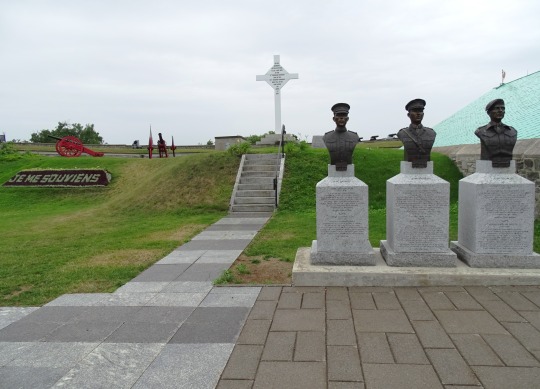


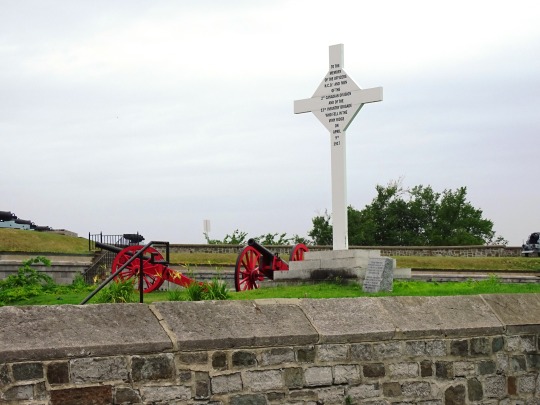
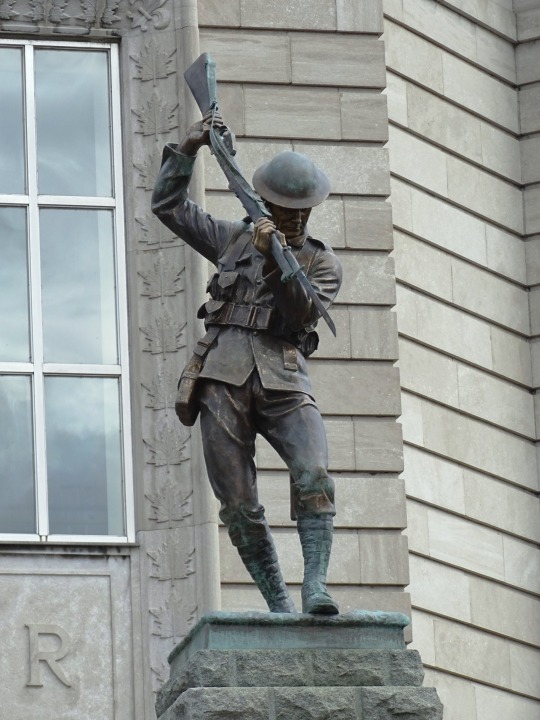

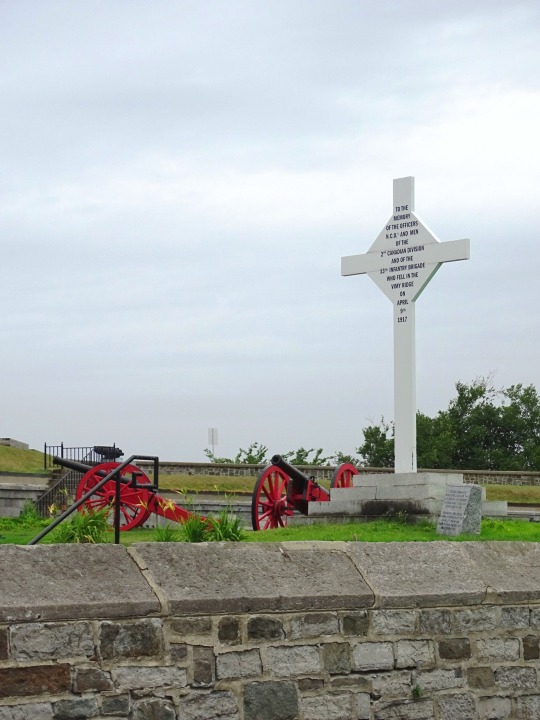


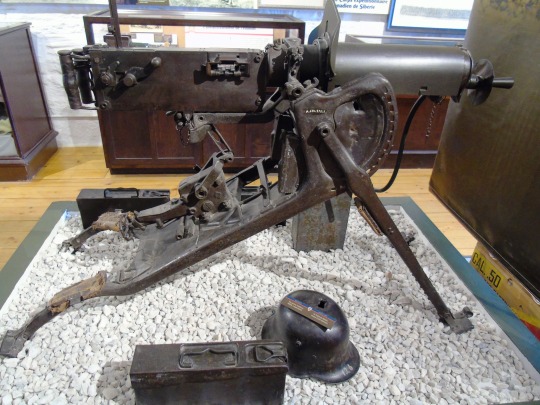
World War I: Canadian forces successfully completed the taking of Vimy Ridge from the Germans on April 12, 1917.
#National War Memorial_The Response by Vernon March#Vimy Ridge Cross#The Road to Vimy and Beyond#Royal 22e Régiment Museum#Citadelle of Quebec#Quebec City#Québec#Ottawa#Ontario#Canada#summer 2018#2015#original photography#Trois-Rivières#citysccape#travel#Monument to the Brave by Cœur-de-Lion McCarthy#Army Museum Halifax Citadel#taking of Vimy Ridge#12 April 1917#anniversary#Canadian history#WWI#World War I#World War One#Fort George#Halifax Citadel National Historic Site of Canada
4 notes
·
View notes
Text

Alexandra Feodorovna in Tsarskoe Selo, Spring 1917
April 1 Saturday
9 AM Holy Communion N[icholas], T[atiana], A[nastasia], I. Upstairs: O[lga], M[aria], Al[exei]. O[lga] 36.8, M[aria] 36.4... 11 1/2 Midnight Service. Broke the fast. With tea: Nastinka, Trina, Mme Zizi, C[oun]t and C[ounte]ss Benkend[orff], Val[ya] Dolg[oruly], Mr Gilliard, Vlad[imir] Nik[olaevich][Derevenko], Botkin, Commander, sentry officers.
April 2nd Easter Sunday
20 min in the sun. O[lga] 36.6, M[aria] 36.7
12 1/2 Paschal greetings. Tea: Trina, Nastinka. Sat on the balkony. 6 [o'clock] O[lga] 37.
7PM Vespers in the playroom.
(1917 Diary of Alexandra Feodorovna)
2 notes
·
View notes
Photo
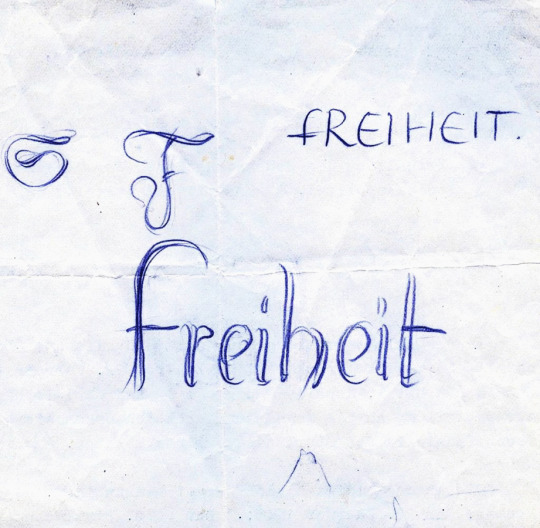
München, February 22, 1943 / 2023
«freiheit»
(the reverse side (detail) of a document belonging to the Chief Prosecutors, February 21, 1943, with handwriting «freedom» by Sophie Scholl)
«Die Verurteilte war ruhig und gefasst.»
(Protokoll über die Vollstreckung des Todesurteils des Volksgerichtshofes an Sophie Scholl, München, den 22. Februar 1943)
Sophie Scholl (May 9, 1921 – February 22, 1943), student
Hans Scholl (September 22, 1918 – February 22, 1943), student
Christoph Probst (November 6, 1919 – February 22, 1943), student
Alexander Schmorell (September 16, 1917 – July 13, 1943), student
Kurt Huber (October 24, 1893 – July 13, 1943), professor
Willi Graf (January 2, 1918 – October 12, 1943), student
and
Hans Konrad Leipelt (July 18, 1921 – January 29, 1945), student
Margaretha Rothe (June 13, 1919 – April 15, 1945), student
Reinhold Meyer (July 18, 1920 – November 12, 1944), student
Friedrich Geussenhainer (April 24, 1912 – April 1945), student
Katharina Leipelt (May 28, 1893 – January 9, 1944), dr. rer. nat.
Elisabeth Lange (July 7, 1900 – January 28, 1944)
Margaretha Mrosek (December 25, 1902 – April 24, 1945)
Kurt Ledien (June 5, 1893 – April 23, 1945), dr. jur.
«Das wird Wellen schlagen»
«Allen!»
#weiße rose#sophie scholl#hans scholl#christoph probst#alexander schmorell#kurt huber#willi graf#hans konrad leipelt#margaretha rothe#reinhold meyer#friedrich geussenhainer#katharina leipelt#katharina leipelt baron#elisabeth lange#margaretha mrosek#margaretha mrosek schram#kurt ledien#weiße rose stiftung#studentenwohnheim geschwister scholl#1890s#1900s#1910s#1920s#1940s
26 notes
·
View notes
Text
Emil Schäfer - Part 2
Jasta 11
Schäfer had no trouble keeping up with the other pilots and shot down his first victory within Richthofens Staffel (his second in total) a few weeks after his arrival. On 4 March 1917 he shot down two enemies in one day. On 6 March he was awarded the Iron Cross First Class. Within the squadron there was room for friendly teasing; when Schäfer reported about his fight, his comrades teased him about his supposed bad shooting (he himself admitted that he needed a lot of ammunition): “The observer must have thrown the map at you” (in reverence to him having to get so close to the other airplane), “The observer probably cried about your lousy shooting and his handkerchief flew away”. But all in good fun.
Once when Manfred von Richthofen didn´t return after a big fight, Schäfer drove around the area trying to find out what had happened. Rumours of bullet wounds and life threatening injuried were making rounds. That's why Schäfer was pleasantly surprised when he found his squadron leader happily in the mess of a pioneer unit in Hénin-Lietard. Slurping oysters.

In his first full month with Jasta 11 Emil Schäfer increased his victory score to 8, then it was time for the infamous Bloody April. Schäfer contributed to that terrible time for the British by shooting down 15 of them. He enjoyed the spring time: “Numbers 12 and 13 fell today. It's wonderful spring weather here and it's been raining Englishmen for eight days”, he writes to his parents on 6 April 1917.
On 22 April Schäfer got shot down during a fight and he had to emergency land between lines. He had to hid in a shell hole and wait for darkness, then he had to sneak back to the German lines dodging English patrols. He managed to reach an outpost and after a short recovery break he made his way back to his comrades. His adventure impressed his comrades and even Richthofen mentioned it in his biography. He learned a lesson from that experience: “I am glad that I got out of the situation yesterday in one piece, and in future I will strongly consider attacking at low altitudes beyond the line”.
On 26 April he got the notification that the Kaiser awarded him the Hausorden von Hohenzollern (the award that usually preceeded the Pour le Mérite). He also got less happy news, as he was ordered to leave Jasta 11 and become leader of Jasta 28. He was excited about getting to lead his own unit, but “I am bitterly sorry that I now have to leave my beloved squadron, my excellent comrades and, above all, von Richthofen”.
On the same day, Schäfer had the pleasure to safe Lothar von Richthofens life. Lothar was being attacked by an English plane and lost controll of his machine, Schäfer got behind the enemy and managed to shoot it down in flames.
On 30 April he was awarded the Pour le Mérite.
In May he left for Jasta 28. “I now face a task like no other I´ve had before. I hope and believe that I´ll be well up to it. Staffel 28 is filled with good pilots. In the four days since I am in command, we´ve shot down four, so the prospects are good”.

On 5 June 1917 Schäfers luck ran out. Used to the extremely close teamwork and mutual protection within Jasta 11 he went into a group of English planes. Max Müller, an experienced pilot himself, described the fight: “Leutnant Schäfer was the leader of our flight against eight Englishmen. I myself was attacking from above – that’s the best way to attack. Leutnant Schäfer was attacking with six other gentlemen from the same hight. He had almost brought down one Englishmen when he was attacked by three more from the rear and from above. I came to his assistance but it was too late. Leutnant Schäfer´s machine broke up and crashed vetically. The other gentlemen did not attack vigorously enough. They are not as yet proficient enough. It could also be that a cable had been severed or shot off. He made the mistake of acting without regard for himself in order to take care of the others. I have told him that many times before”.
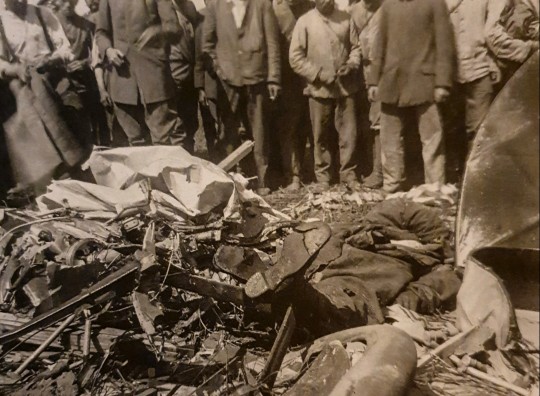
He was buried in his home town of Krefeld on 11 June 1917. Manfred von Richthofen and Werner Voss attended the funeral. The plaque commemorating Schäfer is still above his birthplace.

RIP Emil Schäfer (1891 – 1917)
Sources:
Vom Jäger zum Flieger, by Schäfer (1918)
The Blue Max Airmen Vol.7, by Lance J. Bronnenkant (2015)
7 notes
·
View notes
Text
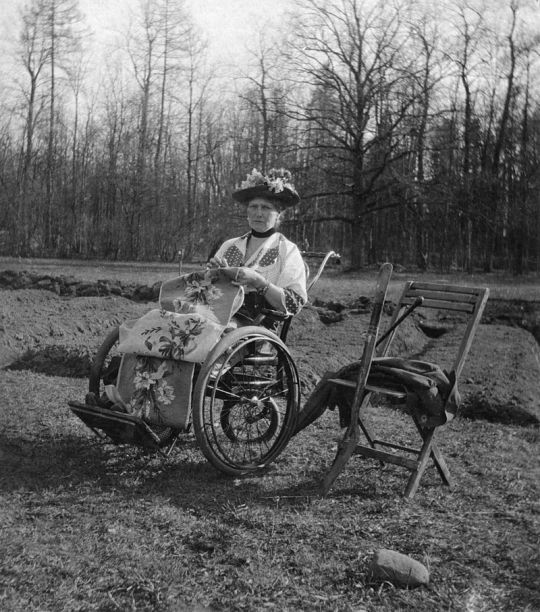
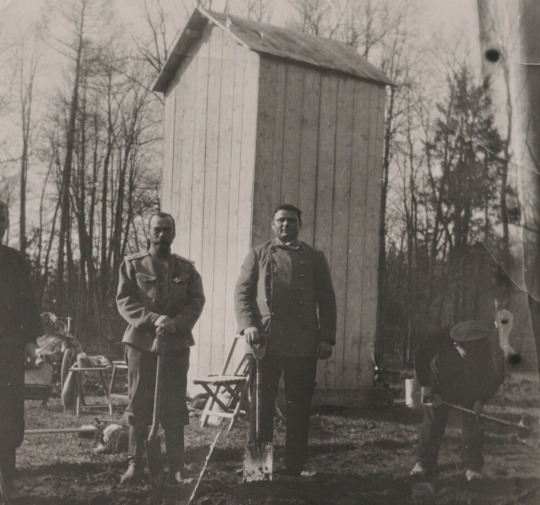

On the photographs: top - Alexandra Feodorovna in her wheel chair outside in the vegetable garden, embroidering, Tsarskoe Selo, April 1917; bottom: Nicolas II with his 'team' working in the vegetable garden in Tsarskoe Selo, spring 1917
'The ‘absence’ of Alexandra Feodorovna
One of the striking observations I made while studying the photographs of the Family for the period of March-July 1917 was the obvious and clear absence of Alexandra Feodorovna on them. Those couple of photographs where she did appear picture her motionless, a sort of frozen. She was not only absent from the photographs and took very little part in the outside activities but she also was absent from her own diary. In the period of March-July 1917, she made just a handful of diary entries on the following dates:
March 1917, Tsarskoe Selo
1, 2, 3, 4, 5, 8, 9, 10, 21, 22, 23, 27
April 1917, Tsarskoe Selo
1, 2, 8, 11, 12, 14, 15, 18, 23, 29, 30
May 1917, Tsarskoe Selo
6, 25, 26
June 1917, Tsarskoe Selo
3, 9, 10, 20
July 1917, Tsarskoe Selo
11, 13, 25, 29, 30, 31
The first time Alexandra Feodorovna made an appearance in ‘public’, e.g. went outside and sat in the garden was on the 11 of April. This occasion found a reflection in the diary entry of Nicolas II: ‘In the afternoon, Alix finally went for a walk with us. Nagorny pushed her in a wheel chair. She watched us work with the ice.’ In her own dairy, Alexandra Feodorovna described her appearance as follows: ‘In my wheel chair [was] in the garden with the others who were working with ice.’ [...] - Seraphima Bogomolova
Read more in Part One: 'Like Kings and Queens, Like Princes and Princesses'
#investigation#research#romanovs#nicolas ii#seraphima bogomolova#evidence#murder mystery#photographs#alexandrovsky palace#tsarskoe selo#spring 1917#Alexandra Feodorovna#vegetable garden#gardening#diaries
2 notes
·
View notes